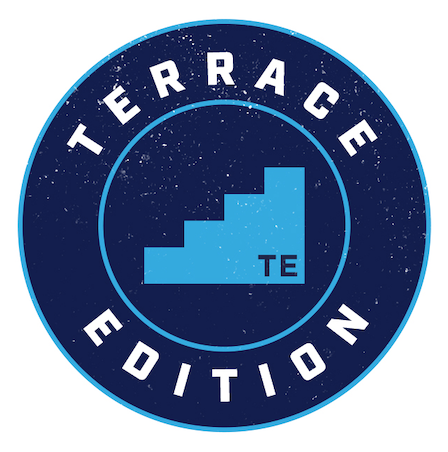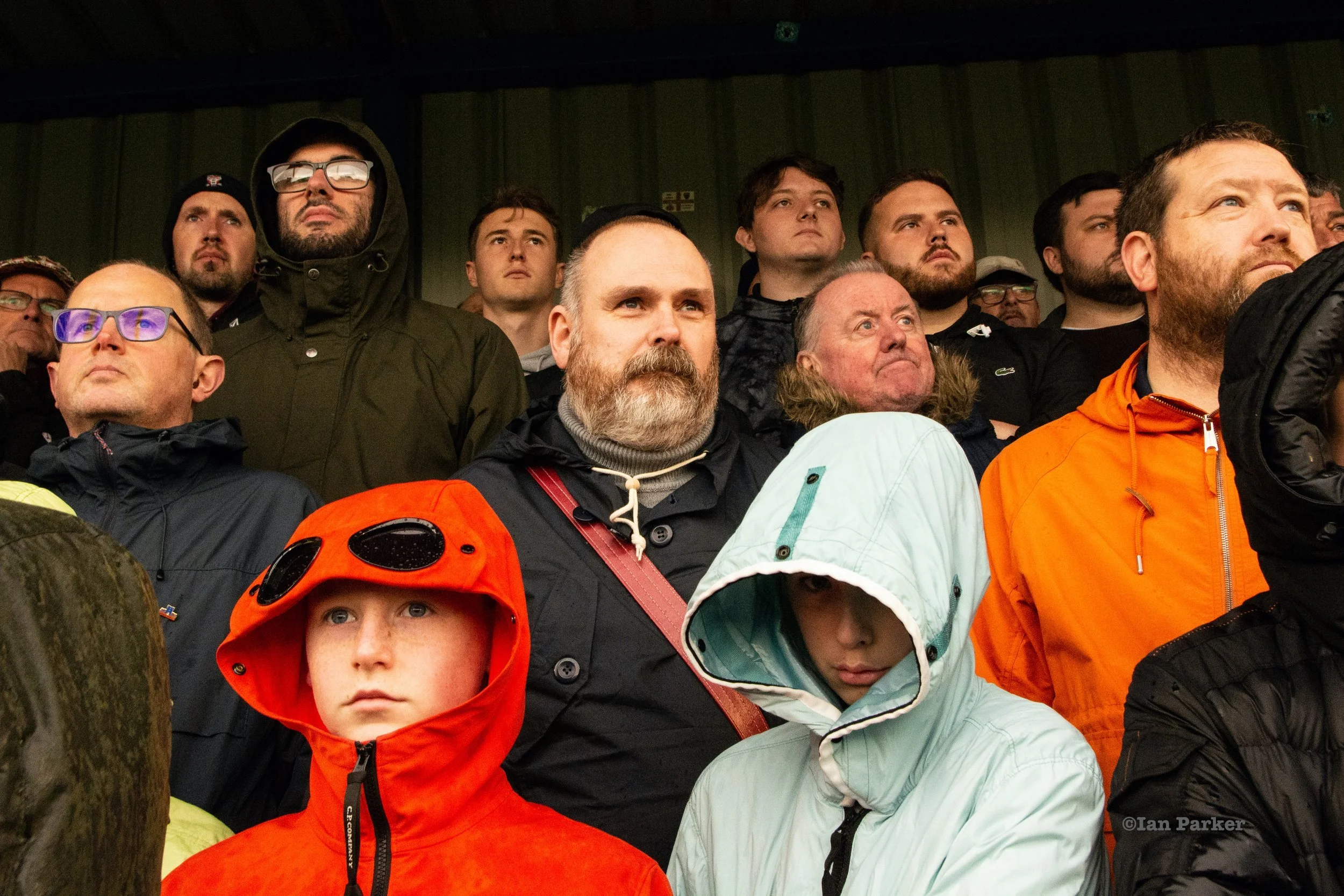Fútbol Mallorquín

Words: Marc Maurits
Images: Marc Maurits
When you think of Mallorca, the images that likely spring to mind are of sun-soaked beaches, azure bays, and vibrant nightlife.
This Balearic gem is a paradise for holidaymakers and party-goers alike, drawing millions of tourists each year to its shores.
But beyond the sun and sea, there lies a lesser-known side to Mallorca—one that will intrigue football enthusiasts looking for a unique experience on this Mediterranean island.
Join me on a journey to explore some of Mallorca's most remarkable football grounds, where the passion for the game burns as brightly as the summer sun.
Our journey begins in Palma, the capital and beating heart of Mallorca. With around 403,000 inhabitants, Palma is the largest city in the Balearic Islands and the proud home of RCD Mallorca.
Founded in 1916, this historic club plays its home games at the imposing Son Moix Stadium. Known affectionately as "Los Rojinegros," RCD Mallorca currently compete in La Liga, Spain's top football division.
©Marc Maurits/ Terrace Edition. Campo Lluís Sitjar.
For the true football aficionado, a visit to the remnants of the club’s former ground, Campo Lluís Sitjar, is a must. Located in the old town, the stadium may now be little more than a crumbling facade, but it holds memories of a bygone era.
Speak to the older residents of the neighbourhood, and they'll regale you with tales of the "Barralets" who once filled the streets every matchday, their excitement palpable as they made their way to the game.
Just a short drive from Palma, you’ll find Club Deportivo Atlético Baleares. Established in 1920, the club now plays in the fourth tier of Spanish football, Segunda División B Federación Group 2, after a recent relegation.
Their home, Estadi Balear, is currently undergoing extensive renovations, but the team has returned to play here once again. The stadium's main stand is visible from the MA-20, Palma's ring road, offering a glimpse of the passion that lies within its walls.
While the derby between Atlético Baleares and RCD Mallorca has become a rare event, the rivalry between the "Balearicos" and "Rojinegros" is still very much alive.
For those wanting to delve deeper into the club's storied history, I highly recommend Liam Borchers' book, *The Story of Atlético Baleares*.
©Marc Maurits/ Terrace Edition. UD Poblense.
Venture further into the island, and you’ll discover UD Poblense, a club steeped in history and tradition. Founded in 1935, this Sa Pobla-based team plays its home matches at the Nou Camp de Sa Pobla.
During the 1980s, under the leadership of the legendary coach Lorenzo Serra Ferrer, UD Poblense competed in Spain’s third division, drawing large crowds to their games.
Today, the "blaugranas" compete in the Tercera División Federación Group 11, the fifth tier of Spanish football. If you visit, be sure to ask for a tour of their small museum—it’s a treasure trove of the club's rich history.
In the town of Inca, Club Esportiu Constància calls the Nou Camp d'Inca home. With its distinctive scoreboard, this stadium is one of the most charming on the island.
Though the 10,000-seat venue rarely sells out these days, it once roared with the cheers of fans during the club's 11 seasons in the second division.
The Blanc-i-Negres now play in the Tercera División Federación Group 11, but the passion for the game remains strong. As you sit in the stands, you might even spot a train passing by, adding to the unique charm of this historic ground.
©Marc Maurits/ Terrace Edition. Club Esportiu Constància.
Mallorca's football culture is as diverse as the island itself, and the smaller clubs each offer their own distinct character.
Take CE Felanitx, for example. Founded in 1943, this club's home, the Camp Municipal de Fútbol Es Torrentó Mariona Caldentey Oliver, offers breathtaking views.
From the stands, you can see the picturesque town of Felanitx on one side and the majestic Santuario de San Salvador monastery on the other.
Perched on a 510-meter-high mountain, the monastery has been a place of pilgrimage since 1348, and its presence adds a sense of history and grandeur to every match played below.
CE Santanyí, founded in 1968, play at the Estadio Municipal de Santanyí. With a large main stand and a capacity of 4,000, this stadium is a significant presence in the small town.
Meanwhile, in Capdepera, CE Escolar plays in the shadow of the Castell de Capdepera. The Estadio Es Figueral’s main stand offers stunning views of this ancient fortress, which dates back to the 14th century. On match days, the stadium, with its 2,000-seat capacity, comes alive as fans gather to support their local team.
©Marc Maurits/ Terrace Edition. CE Felanitx.
Further north, in Alcúdia, UE Alcúdia’s Estadi Municipal Els Arcs is nestled between the old town and the port. With a main stand and a standing terrace behind the goal, this cozy stadium can accommodate 1,750 spectators.
The atmosphere on match days is electric, with fans cheering their team on.
And finally, we arrive at Cala d'Or, a charming village that offers both football and holiday delights.
Walking from the Village along the main road, you can see the floodlights of the Estadio Municipal de Cala d'Or appearing in the distance. CD Cala d'Or's ground is a cozy stadium with a decent-sized stand and a terrace with a large BBQ, perfect for enjoying a match in a relaxed, friendly atmosphere.
The stadium can hold up to 2,000 supporters, but the real magic happens after the game. Cala d'Or itself is a lively destination, with stunning white beaches, a rugged coastline, and an inviting town centre filled with shops, bars, and restaurants.
The marina adds to the charm, making Cala d'Or a must-visit for any football fan exploring Mallorca.
So, whether you're here for the beaches or the ball games, Mallorca has something to offer every traveler.
Football may not be the island's most famous attraction, but for those who seek it out, it reveals a rich, passionate, and deeply rooted culture that is as much a part of Mallorca as its sun, sea, and sand.
©Marc Mauritz/ Terrace Edition. CD Cala d'Or.
©Marc Maurits/ Terrace Edition. UE Alcúdia.
©Marc Maurits/ Terrace Edition. Club Deportivo Atlético Baleares.
©Marc Maurits/ Terrace Edition. CE Santanyí.
©Marc Maurits/ Terrace Edition. CE Escolar.
©Marc Maurits/ Terrace Edition. Club Esportiu Constància.
©Marc Maurits/ Terrace Edition. CE Santanyí.
©Marc Maurits/ Terrace Edition. CE Felanitx.
©Marc Maurits/ Terrace Edition. RCD Mallorca.
You can find Marc on X: @mfw1970 and Instagram: @mfw70.mm


















